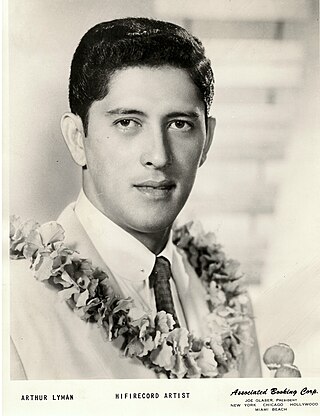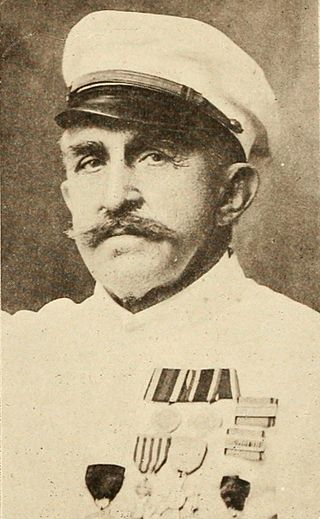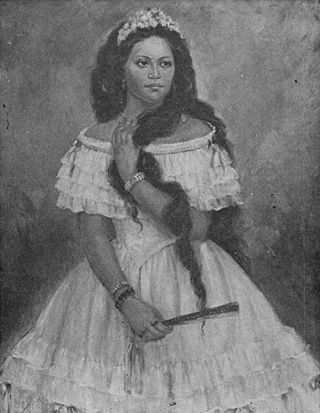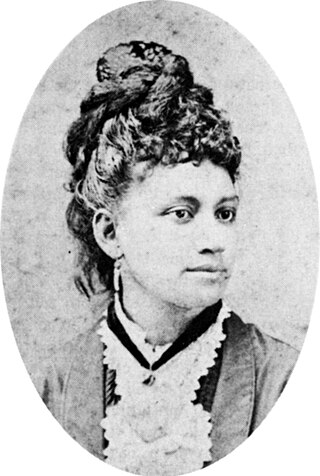
Christmas in Hawaii is a major annual celebration, as in most of the Western world.

Christmas in Hawaii is a major annual celebration, as in most of the Western world.
This festival was introduced to Hawaii with the arrival of Protestant missionaries, and is believed to have started after 1820. [1] [2] Most of the traditions they currently celebrate come from the missionaries. [3] [4] Before the Hawaiians celebrated the Christmas people know today, they had a festival named Makahiki which lasted around four months and in which all wars were forbidden. The season still had the essence of "peace and goodwill to all men", which is another thing people tend to associate with Christmas. [1]
The first recorded Christmas in Hawaii was in 1786, when the captain of merchant ship the Queen Charlotte , George Dixon, was docked on the Hawaiian island of Kauai. Dixon and his crew celebrated a large Christmas dinner that included a whole roast pig. [1]
King Kamehameha IV and Queen Emma of Hawaii officially celebrated Christmas in 1856 as a day of Thanksgiving. On Christmas Eve of 1858 Mary Dominis threw a party at Washington Place featuring the first instance of a Christmas tree and Santa Claus in Hawaii. King Kamehameha IV declared it an official holiday in 1862. [5] [6]
The annual Honolulu City Lights ceremony features a 50-foot Norfolk pine Christmas tree decorated with bright lights and elaborate decorations. There is also live entertainment. [1] Another annual celebration is the Festival of Lights held during December in Lihue, Kauai.
The traditions on Christmas day are similar to other places; a large meal is eaten and then, as the beach is often nearby in Hawaii, surfing or swimming often takes place in the waters, [7] and musical groups with guitars and ukuleles and dancing hula entertain the crowds on the beach. Santa hats are worn and the traditional Santa's sleigh and reindeer are replaced by an outrigger canoe pulled by dolphins. [7] The different cultures and ethnic groups that have settled in the islands celebrate the Christmas traditions of Hawaii in their own unique ways, which may be religious or plainly secular. Even Santa Claus (Hawaiian: Kanakaloka) himself is not wearing his corporate red and white suit, but has swapped it for flowery Hawaiian clothes. [7]
Christmas wreaths are made from the poinsettia plant. [3]

The phrase "Mele Kalikimaka" can be translated from Hawaiian to mean "Merry Christmas". [8] It is also a Hawaiian themed Christmas song composed by Robert Alex Anderson in 1949. The phrase is borrowed directly from English, but, since Hawaiian has a different phonological system (in particular, Hawaiian does not possess the /r/ or /s/ of English, nor does it have the phonotactic constraints to allow consonants at the end of a syllable), "Merry Christmas" becomes "Mele Kalikimaka". [9]
There is also a more modern take on this song, called "Melekalikimaka" by rock band The Beach Boys from the compilation album Ultimate Christmas . [10]

Honolulu is the capital and most populous city of the U.S. state of Hawaii, located in the Pacific Ocean. It is the county seat of the consolidated City and County of Honolulu, situated along the southeast coast of the island of Oʻahu, and is the westernmost and southernmost major U.S. city. Honolulu is Hawaii's main gateway to the world. It is also a major hub for business, finance, hospitality, and military defense in both the state and Oceania. The city is characterized by a mix of various Asian, Western, and Pacific cultures, reflected in its diverse demography, cuisine, and traditions.
The music of Hawaii includes an array of traditional and popular styles, ranging from native Hawaiian folk music to modern rock and hip hop. Styles like slack-key guitar are well known worldwide, while Hawaiian-tinged music is a frequent part of Hollywood soundtracks. Hawaii also made a contribution to country music with the introduction of the steel guitar. In addition, the music which began to be played by Puerto Ricans in Hawaii in the early 1900s is called cachi cachi music, on the islands of Hawaii.

Arthur Hunt Lyman was a Hawaiian jazz vibraphone and marimba player. His group popularized a style of faux-Polynesian music during the 1950s and 1960s which later became known as exotica. His albums became favorite stereo-effect demonstration discs during the early days of the stereophonic LP album for their elaborate and colorful percussion, deep bass and 3-dimensional recording soundstage. Lyman was known as "the King of Lounge music."

Henry or Henri Berger was a Prussian Kapellmeister, composer and royal bandmaster of the Kingdom of Hawaiʻi from 1872 to 1915.
The following is an alphabetical list of articles related to the U.S. state of Hawaii:
"Mele Kalikimaka" is a Hawaiian-themed Christmas song written in 1949 by R. Alex Anderson. The song takes its title from the Hawaiian transliteration of "Merry Christmas", Mele Kalikimaka. One of the earliest recordings of this song was by Bing Crosby and the Andrews Sisters in 1950 on Decca. It has been covered by many artists and used in several films.

The following outline is provided as an overview of and topical guide to the U.S. state of Hawaii:
The Festival of Lights is an annual celebration held during December in Lihue, Kauai.

Nancy Wahinekapu Sumner was a high chiefess during the Kingdom of Hawaii of Hawaiian, Tahitian and English descent. She served as lady-in-waiting of Queen Emma and was one of the most prominent ladies of the Hawaiian royal court during the reigns of Kamehameha IV and Kamehameha V.

Eric Lee is a Hawaiian musician, singer, songwriter, and producer. His work has appeared on more than 30 albums, including his work with The Kanile'a Collection, Nā Kama, The Ka'ala Boys, The Mākaha Sons, and his solo albums, Crossroads, Kawehilani, and his Twentieth Anniversary Anthology.

The Hawaiian Music Hall of Fame is an organization dedicated to recognizing the cultural importance of the music of Hawaii and hula. Established in 1994, the Hawaiian Music Hall of Fame promotes the appreciation and preservation of Hawaiian culture through educational programs and annual inductions honoring significant individuals, groups, institutions, chanters and songs.

Elizabeth Sumner Chapman Achuck Lapana Keawepoʻoole was a Hawaiian high chiefess during the Hawaiian Kingdom and lady-in-waiting of Princess Likelike. An accomplished Hawaiian composer, she composed the popular Hawaiian love song Sanoe with Queen Liliʻuokalani, which was about a love affair in the Hawaiian royal court in the 1870s.
Lei Day is a statewide celebration in Hawaii. The celebration begins in the morning of May first every year and continues into the next day. Lei day was established as a holiday in 1929. Each Hawaiian island has a different type of lei for its people to wear in the celebration. The festivities have consistently grown each year and the state of Hawaii has changed the location of the event. Lei day was first held in the Courts and Town Halls but has since been moved to Kapi'olani park.

Charles Edward King was an educator, Hawaii territorial legislator, and a songwriter who is most widely known as the composer of "Ke Kali Nei Au". King was inducted into the Hawaiian Music Hall of Fame in 1995. Music historian George Kanahele regarded King as the "Dean of Hawaiian Music", although this sobriquet is more associated with John Kameaaloha Almeida.
Mary Lambert Jones Dominis was an American settler of Hawaii and the first mistress of Washington Place in Honolulu. Born into a large New England family, she married merchant sea Captain John Dominis, for whom Honolulu was a frequent port of trade. The couple relocated in 1837 to the Hawaiian Kingdom with their son John Owen Dominis. Their two daughters remained behind to complete their education.

Sovereignty Restoration Day is a national holiday of the former Hawaiian Kingdom celebrated on July 31 and still commemorated by Native Hawaiians in the state of Hawaii. It honors the restoration of sovereignty to the kingdom, following the occupation of Hawaiʻi by the United Kingdom during the 1843 Paulet Affair, by British Rear-Admiral Richard Darton Thomas and when King Kamehameha III uttered the phrase: Ua Mau ke Ea o ka ʻĀina i ka Pono.
Na Lani ʻEhā, translated as The Four Royals or The Heavenly Four, refers to the siblings King Kalākaua (1836–1891), Queen Liliʻuokalani (1838–1917), Princess Likelike (1851–1887) and Prince William Pitt Leleiohoku II (1854–1877). All four were composers, known for their patronage and enrichment of Hawaii's musical culture and history. All four of them organized glee clubs. William Pitt Leleiohoku II, the youngest brother who died at age 22, was a guitar master and leader of the Kawaihau Glee Club. Youngest sister Likelike was a musician and a co-founder of the Kaohuokalani Singing Club.
Victoria Keali‘ika‘apunihonua I‘i Rodrigues was a Hawaiian musician and entertainer. Born into a Native Hawaiian family with strong musical roots, Rodrigues preserved and shared traditional Hawaiian songs that might otherwise have been lost, including "Hawai‘i Aloha," "Kaulana Nā Pua," and "Paoakalani". She was honored by multiple organizations for her contributions to Hawaiian culture, including being inducted into the Hawaiian Music Hall of Fame in 1995.